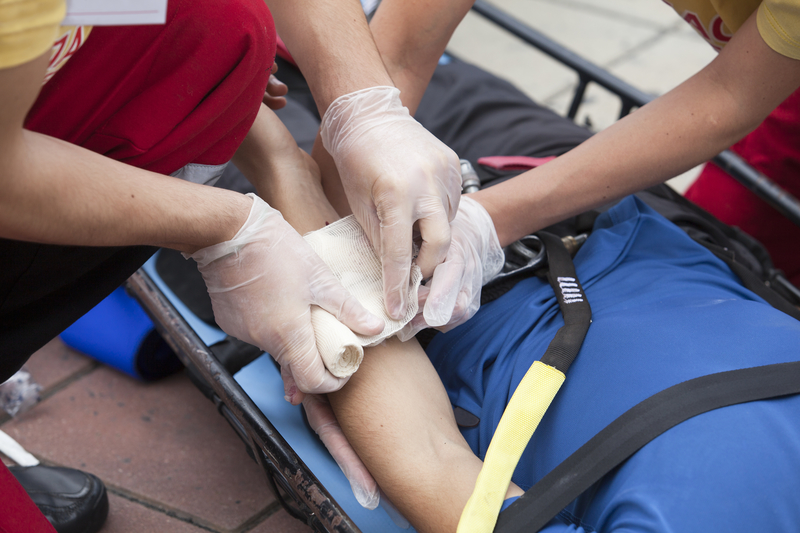It's easy to not make the most clear-headed decisions in the aftermath of an accident. The below 3 tiers of triage will ensure that you properly evaluate the situation and deal with the injuries of highest priority first.
In the case of multiple casualties, assess and evacuate the victims as quickly (and safely) as possible. Obviously, this requires a judgement call on your behalf that can be quite stressful, but at the end of the day, it’s about the patients well being and if you’re following the proper protocol for keeping yourself out of legal trouble as a first aider, other than that – just do the best you can. Remember to frequently re-assess the casualties and change priorities as the situation develops (or deteriorates, as the case may be).
All in all, organize your priority in terms of these three tires of injuries, being sure to deal with tier 1 injuries before tier 2 injuries, and tier 2 before tier 3.
MULTIPLE INJURY TRIAGE: TIER 1
Highest priority. Stabilize as best you can and arrange immediate evacuation should the casualty present the following;
- Severe bleeding (flow of blood cannot be stemmed using pressure).
- Unconsciousness (patient completely unresponsive and appears to be comatose or comatose like state).
- Asphyxia or respiratory issues affecting ability to breath (self-explanatory, people gotta breathe).
- Other life-threatening emergencies, which you will have to use your own judgement to assess (at the end of the day, assess the best you can and if you think someone is at risk of dying – place them in Tier 1).
MULTIPLE INJURY TRIAGE: TIER 2
Medical emergencies which can be put on hold due to relatively stable condition of the victim in question such as;
- Burns (these are painful, but rarely life-threatening).
- Back injuries (yes, it may be surprising to see back injuries in this category, but as long as the person is not moved and in a safe position, back injuries are not, generally speaking, life threatening).
- Fractures (try to limit movement, but as a general rule, you can move on to more serious injuries).
MULTIPLE INJURY TRIAGE: TIER 3
Mild injuries that are not life threatening and in which the medical care can be deferred safely belong in Tier 3.
- Minor bleeding (flow of blood is easily contained using pressure).
- Minor fractures (dislocated joints would also fall in the category).
- Erratic behaviour or shock of a psychological nature (as long as they are not a threat to themselves or others, don’t get involved and let the professionals deal with this).
Always provide medical care to casualties with these tiers in mind. Whether you are dealing with one victim with multiple injuries or multiple victims with individual injuries, or, of course, multiple victims with multiple injuries – regardless, the process should not change.
Triage is important in order to ultimately help save each victim’s life. Your goal as a first aider should always be to stabilize each person for transportation so that they can receive professional treatment in a medical facility where further tests can be performed to establish the true extent of their injuries.
Obviously, my list is non-exhaustive in nature, as there are many other injuries that can be sustained and should be placed into different tiers based on seriousness, but much depends on the particular situation, and your own judgment.
Have you been able to successfully use these 3 tiers of triage? Let us know in the comments below!
Article Source: More Than Just Surviving
